#land brandenburg
Photo

Brandenburg, 2022
Photo: Roland Helbig
#Land Brandenburg#nightshot#nightphotography#black and white photography#original photographers#photographers on tumblr#Fujifilm X100F
133 notes
·
View notes
Text


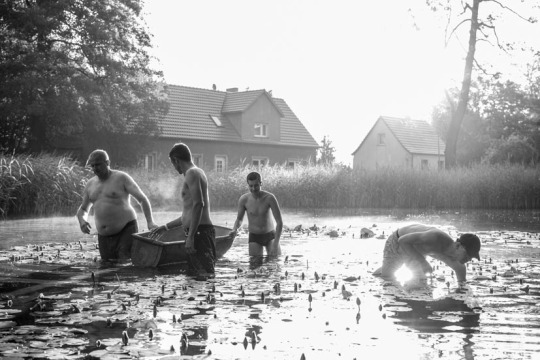

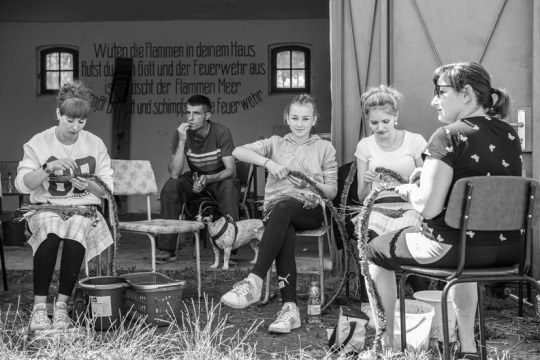
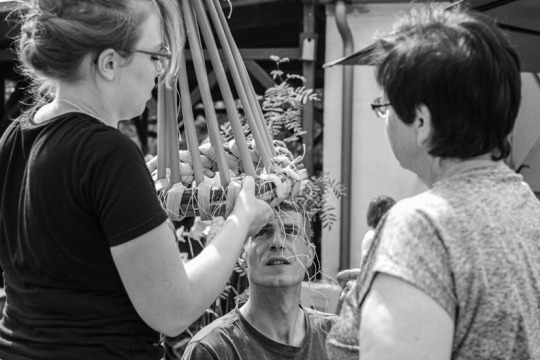




7 notes
·
View notes
Text




So endet das Bungalow-Jahr 2022.
Der Rotahorn, der noch alle Blätter trägt, wurde zu groß und ausladend (die oberen Bilder). Das Zurückschneiden ist eine Wissenschaft für sich. Egal, es mußte sein. Die unteren Bilder zeigen das Ergebnis. Wir werden nächstes Jahr sehen, ob der Busch gelitten hat.
2 notes
·
View notes
Text



COASTER
Stone Type: Marble
Dimensions: 4" x 4"
Choose from marble, sandstone, travertine, and limestone
Sold as individual coasters
Finished with cork backing for scratch-free tables
Designs printed in full color with fade-resistant ink
#coaster#coasters#brandenburg#symbol#flag#Land Brandenburg#Potsdam#germany#deutschland#german#state#eagle#stone#marble#stone coaster#marble coaster#celebration#drink#holiday
0 notes
Video
youtube
Neues Stadtquartier für Bernau
Hier an der Schwanebecker Chaussee soll nach Plänen der Stadt Bernau die Gartenstadt weTown entstehen. Mit 4 historischen Bauten und 81 Neubauten entstehen ca. 2300 kleine und große Wohnungen. Die liebevolle Sanierung der unter Denkmalschutz gestellten historischen Gebäude mit ihrer geschichtlichen´Vergangenheit werden ein higlight des neuen Viertels werden. Die Natur wird mit einbezogen, so entsteht ein großer Teich und großflächige Parks mit Spielplätzen und Ruhezonen. Auch auf den Dächern der Mehrfamilienhäuser entsteht ein Grün, der die Bewohner aufatmen lässt. Die Umsetzung dieses beeindruckenden Plans steckt noch in den Kinderschuhen, allerdings sind die ersten historischen Gebäude, die aus den 1930iger Jahren stammen und Teil des Heeresbekleidungsamtes und später Kaserne der sowjetischen Streitkräfte waren bereits im Bau und werden voraussichtlich 2023 bezugsfertig. Das neue Stadtquartier wird dann für Bernau Wirklichkeit.
#Bernau#bernau bei berlin#ffb#fernsehfunk berlin#regionales#regionales aus der mark brandenburg#brandenburg#Land Brandenburg#gartenstadt
0 notes
Text
YouTube-Lehrer gewinnt vor dem LAG Berlin-Brandenburg
Lehrer und außerordentliche Kündigungen
In Corona-Zeiten gab es oft-zum Teil auch durchaus berechtigt-Kritik an der Corona-Politik der Bundesregierung und der einzelnen Bundesländer.
Kritik an der Corona-Politk
Es gab aber auch Fälle, bei denen maßlos übertrieben wurde (von Verschwörungstheorien – ganz abgesehen), die dann auch rechtliche Konsequenzen nach sich gezogen haben.
YouTube-Lehrer:…

View On WordPress
#Arbeitsgericht Berlin#Corona#Corona-Politik#fristlose Kündigung#Impfen macht frei#Impfung#Kündigungsschutzklage#Land Berlin#Landesarbeitsgericht Berlin-Brandenburg#Lehrer#ordentliche Kündigung#Schutzimpfung#YouTube
0 notes
Text
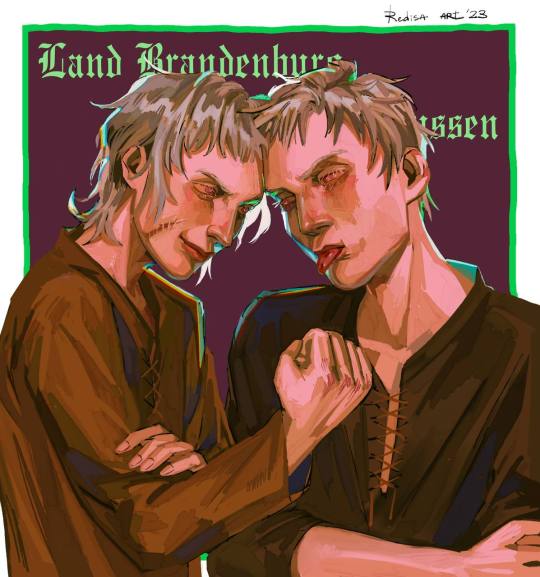
I had an idea for the full implementation of Julchen as part of the Kingdom of Prussia in the form of the land Brandenburg
I won’t hide the fact that I’m losing my head over selfcest and germancest 🥵
#digital art#hetalia#hetalia axis powers#fanart#hetalia fanart#hetalia world stars#aph prussia#nyo prussia#gilbert beilschmidt#julchen beilschmidt
206 notes
·
View notes
Photo
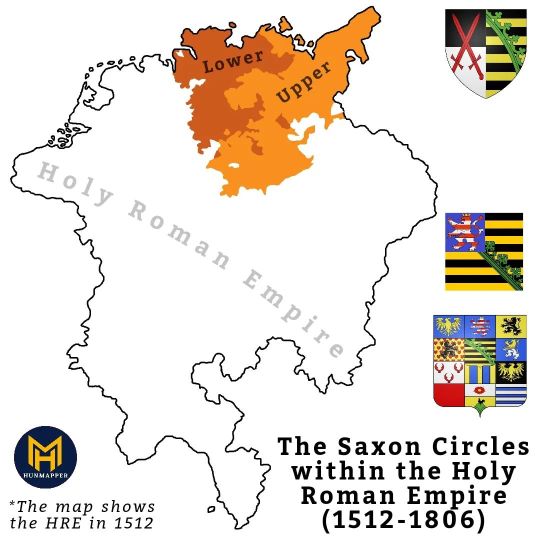
The Saxon Circles within the Holy Roman Empire
by hunmapper
The Saxon Circle (Sächsischer Reichskreis) was one of the ten imperial circles (Reichskreise) established in the Holy Roman Empire during the late Middle Ages and early modern period. These circles were administrative and defensive entities formed to organize and manage the empire's territories for mutual defense and governance. Here are some key points about the Saxon Circle: Formation: The Saxon Circle was officially established in 1500 as part of the Imperial Reform initiated by Emperor Maximilian I. It comprised territories largely belonging to the House of Wettin, including the Electorate of Saxony and other lands ruled by branches of the Wettin family. Composition: The Saxon Circle consisted of territories primarily located in the present-day states of Saxony, Thuringia, and parts of Brandenburg and Lower Saxony. It included the Electorate of Saxony, the Duchy of Saxe-Wittenberg, the Duchy of Saxe-Lauenburg, the Margraviate of Meissen, and various smaller principalities and counties. Administrative Functions: The primary purpose of the Saxon Circle was to coordinate defense, maintain peace, and provide mutual assistance among its member states. It also served administrative functions such as taxation, recruitment of troops, and representation in the Imperial Diet (Reichstag). Military Contributions: Each member of the Saxon Circle was expected to provide troops and financial support for the defense of the empire. The circle's military forces were mobilized in times of conflict to defend against external threats or to enforce imperial authority within the region. Diet Representation: The Saxon Circle had representation in the Imperial Diet, where its members could voice their concerns and participate in the decision-making processes of the empire. This representation allowed the circle to assert its interests and influence imperial policies.
38 notes
·
View notes
Text

1918 02 15 Hansa Brandeburg W12 Christiansen 4th victory - Mark Postlethwaite
repost better quality and lighting
Oberleutnant zur See Friedrich Christiansen was leading a three-aeroplane patrol of Hansa-Brandenburg W 12 fighter seaplanes from Zeebrugge naval station on 15 February 1918 when, at 1045 hrs, they sighted a large Allied convoy being escorted by two Felixstowe-based Curtiss H-12B Large America flying boats. The latter both fled, but upon being overtaken at 1100 hrs, one of them made a fight of it until the flying boat was shot down in flames from an altitude of 200 metres near Nord Hinder lightship. Heavy seas prevented the Germans from landing near the wreckage, which turned out to be H-12B N4338. The flying boat's crew, Canadian Fit Lt Claude C Purdy, Ens Albert D Sturtevant, Boy Mech Arthur Hector Stephenson and AMI Sidney James Hollidge, perished. Christiansen and his observer shared the victory with Flgobermt Urban and Ltn z S Ehrhard. Albert Dillon Sturtevant, an officer of the US Naval Reserve, was among the 29 members of the First Yale Unit that had been attached to Royal Naval Air Station Felixstowe since October 1917. The first American of any military branch to die in aerial combat in his own country's service during World War 1, Sturtevant was posthumously awarded the Navy Cross and a US Navy destroyer was later named in his honour
38 notes
·
View notes
Photo

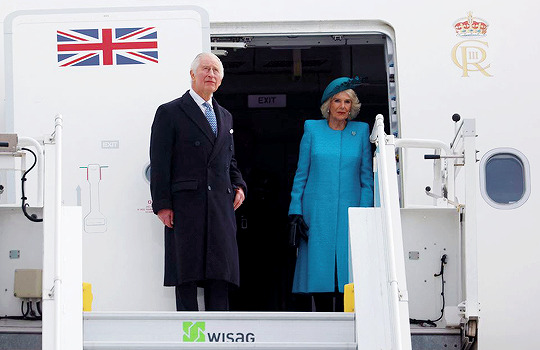
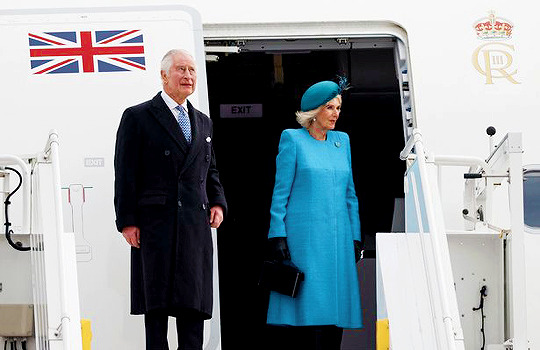
King Charles III and Queen Camilla have begun the first state visit of the new reign after landing at Berlin Brandenburg Airport | March 29, 2023
#royaltyedit#theroyalsandi#charles iii#king charles iii#queen camilla#camilla shand#british royal family#my edit
106 notes
·
View notes
Photo

Brandenburg, 2022
Photo: Roland Helbig
#Land Brandenburg#train#train station#black and white photography#original photography on tumblr#original photographers#photographers on tumblr
64 notes
·
View notes
Text

2 notes
·
View notes
Text


Es ist tatsächlich 6 Jahre her, dass ich den Flieder so zurückgeschnitten habe.
Läßt sich in diesem Blog sehr gut nachvollziehen.
Nun also erneuter Schnitt. Die Äste und Zweige waren der Telefonleitung oberhalb sehr nahe.
#bungalow#garten#allotment#schrebergarten#kleingarten#brandenburg#laube#land brandenburg#autumn#oktober 2023
1 note
·
View note
Text
one unfortunate problem if largely doing away with the concept of aristocracy is that people don’t fucking know how titles work anymore. The idea that William III of Prussia was both a King or Margrave depending on the context would melt their brains. Clergymen holding land in right of their office? Inconceivable. The British Monarch ruling the channel islands as the Duke of Normandy because they aren’t legally part of the Unites Kingdom of GB and NI? Madness.
These days, people don’t even know that Christ isn’t the guy’s name. It’s a mocking title bestowed upon him by the Romans, who REALLY did not understand his whole deal.
You’ve heard of a Shougun? Well check this out: Shougun is an old military title that was given to a nobleman commissioned to do colonialism against the indigenous people of Northern Japan. Knowing that as well as what the office would eventually come to entail tells you something about the history of title and how its holders leveraged it to gain power over the centuries.
The final boss of understanding titles is learning about Personal Unions. How could William III be King and Margrave? Well, he was both King in Prussia (ask me about that in sometime) and Margrave of Brandenburg, but these offices were not one office. Prussia and Brandenburg had distinct laws, customs, and governing organs. Thus, he was both King and Margrave. Btw, this is how the United Kingdom became united. A Scot inherited the English throne and then a century on, his descendant rationalized the government of both countries by unifying their parliaments. However, this never formally dissolved Scotland, just its parliament, which is why it still has its own laws, nobility, and a few other concessions to self rule. Theoretically, Scotland leaving Britain wouldn’t necessarily undo the Acts of Union if the independent country became a republic. This would mean that Charles would remain King of Scotland, he just would lose de facto jurisdiction over the land that Kingdom rules. And yeah, every republic in Europe still sits upon land that a bunch of still living aristocrats continue to lay claim to. The last German Emperor didn’t die without an heir, so there’s still a Prince of Prussia and the French royal throne has a bunch of claimants from a number of branches of the Bourbon dynasty. The French imperial throne also has at least one, maybe two, Bonaparte claimants. I turns out that kingdom (or duchy, archbishopric, county, and so on), is not a place or a set of laws and customs or even the people who inhabit the former and are ruled by the latter. No, a kingdom (or duchy, archbishopric, county, and so on) is a mental construct defined by a title and a person who holds it (or could theoretically hold it).
#claire thoughts#anyway scaramouche wasnt a fucking archon#a god sure#but lots of people have been gods#to be an archon is to be selected by celestia#neuvillette didnt become an archon when he took the gnosis and neither did signora#and venti zhongli ei and nahida remain archons in the absence of their gnoses#this was secretly a genshin post#and not so secretly a special interest post
9 notes
·
View notes
Text
Across Germany, as many as 1 million people streamed into streets and city squares last week to protest the surging popularity and ever crasser messaging of the extreme right-wing party Alternative for Germany (AfD). In Berlin alone, under the banner “Defend democracy: Together against the right,” more than 100,000 people crammed onto the Bundestag lawn on the evening of Jan. 21, flowing over into the adjacent streets between Brandenburg Gate and the city’s central train station. The signs and speeches everywhere from the Baltic Sea port of Rostock to the city of Freiburg near the Swiss border hit a similar note: The AfD’s stripe of right-wing radicalism is out of place in democratic Germany.
This may have once been an exaggeration, but it no longer is. Founded in 2013, the AfD isn’t brand new, nor is its provocative, thinly veiled racism and Islamophobia. But over the course of the past five years—and in the face of damning revelations last week about a secret meeting that took place in November—it has radicalized dramatically. The AfD is now more extreme than many fellow far-right parties across Europe, such as the Sweden Democrats, the Finns Party, and the Dutch Party for Freedom, among others.
Germany’s foremost expert on the subject, sociologist Wilhelm Heitmeyer, said the AfD now stands for an “authoritarian national radicalism,” namely, an ideology that propagates a hierarchically ordered, ethnically homogeneous society overseen by a strong-arm state. What’s particularly radical, he said, is the party’s communication with and mobilization of misanthropic groups that rain violence on select minorities. These protagonists encompass a wide array of hate groups, including neo-Nazis, which are largely responsible for the highest level of hate crimes in Germany in three decades. Its victims are refugees, foreign nationals, Jews, Muslims, and LGBTQ+ people.
Research published in the weekly Der Spiegel shows that the AfD, a party started by nationally minded economists who advocated a return to the Deutsche mark as the national currency, now uses language nearly identical to that of the defunct National Democratic Party of Germany (NPD), a small, virulently xenophobic, and openly neo-Nazi party that ran in German elections for decades but never managed to win seats in the Bundestag. “The AfD and NPD are very close. Not just in terms of their audience or some of their personalities,” Spiegel claimed. “They have major ideological overlaps. The AfD measures up to the NPD [of 2012] in almost all areas, even if the AfD appears more moderate in its party program.”
Terms used by AfD politicians in countless speeches today were part of the NPD’s lingua franca for years, according to Spiegel. Documents attributed to both parties employ reactionary terminology, some of it straight from Nazi Germany, such as Umvolkung (population replacement) and Volkstod (death of the German nation), as well as Stimmvieh (voting cattle) for voters of opposing parties and Passdeutschen (foreign nationals holding German passports). And like the NPD, Spiegel reported in another study, the AfD maintains close links with violent militants.
And this radicalism, which in the past had turned Germans off, has now lifted the AfD to new heights: It is polling at 22 percent support nationwide, second only to the Christian Democrats, and well over 30 percent in several states, making it the number one political force there in advance of autumn elections.
The bastions of this radicalism can be found in the party’s youth organization, Junge Alternative and three federal states, all of them in eastern Germany: Saxony, Saxony-Anhalt, and Thuringia. They are deemed the “extreme right” by Germany’s top domestic security agency and are now under observation as a threat to the democratic order. The investigation could land the case before the country’s highest court, which could ban the party outright.
The current outburst of popular indignation at the AfD, echoed by all of the other major political parties, comes on the heels of an investigative exposé that found that at a clandestine meeting in November, ranking AfD personalities met with known neo-Nazis and wealthy financiers to hammer out plans for the forced deportation of foreign nationals and even foreign-born German citizens.
The extremists congregated at a hotel near Potsdam to design what they called a “remigration master plan” to forcibly repatriate millions of people. Shocked observers drew parallels to the 1942 Wannsee Conference, held not far from Potsdam, at which the Nazis coordinated their plan to deport and murder the entire Jewish population of Europe.
While some AfD politicos have tried to distance the party from the Potsdam meeting, others endorsed its purpose. “Remigration is not a secret plan, but a promise. … and there’s no better way to put it,” announced Hans-Christoph Berndt, the AfD point person in the Brandenburg state parliament, on Jan. 17.
Though the exposé had the force of a bombshell, these revelations don’t throw a new light on the AfD. Rather, they confirm the diagnosis of many experts that the AfD, under the leadership of its most extreme figures—particularly Björn Höcke, a member of the Thuringia legislature—has outpaced other European far-right parties in its radicalism. “The current AfD wouldn’t find a place in the ranks of the Sweden Democrats and most of the other more moderate far-right parties among the European Conservatives and Reformists faction in the European Parliament,” said Ann-Cathrine Jungar, a political scientist at Sodertorn University in Sweden.
She explained that like the AfD, the Sweden Democrats, the Finns Party (formerly the True Finns), and the Danish People’s Party are opposed to immigration and favor law-and-order states. But the Nordic rightists’ experiences in office pushed them to adapt to mainstream norms and policy options. (The Sweden Democrats are currently an informal supporter of the Swedish ruling coalition; the Finns are a coalition member in Finland; and the DPP acted as a support party to a conservative Danish government between 2001 and 2011, as well as from 2015 to 2019.)
The radicalized AfD, Jungar said, in contrast to these parties, actively courts militants, trades in antisemitic tropes, and toys with the proposition of Germany exiting NATO and the European Union. Moreover, AfD politicians have stood against adoption rights for same-sex couples, the inclusion of disabled kids in schools, and the legality of abortion. “These positions simply wouldn’t stand a chance in Sweden,” Jungar added.
The case of the AfD’s close ally, Austria’s Freedom Party (FPO), is more complicated, not least because it has been undergoing a fresh phase of radicalization. But even so, the Austrian historian Ulf Brunnbauer of University of Regensburg said that two stints in the federal government since 2000 and tenures in many regional legislatures have pushed the FPO to tone down its more racist positions.
“The FPO is less extremist than the AfD, especially if you take the idea of racial purity as yardstick,” Brunnbauer said, citing the former party’s wooing of naturalized Serbs. “The FPO includes a larger breadth of opinions, whereas the AfD has lost most of its more moderate proponents. With some exceptions, such as the current party head, Herbert Kickl, many FPO people are much more moderate.” Moreover, Brunnbauer noted, there is no comparative neo-Nazi presence and mobilization in Austria like that in eastern Germany.
Benjamin Opratko, a political scientist at Germany’s Leuphana University of Lüneburg, however, is of another opinion—not about the AfD, but about the FPO: “The FPO under Kickl has moved further to the right. It is now indistinguishable from the right-wingers in the AfD,” he argued. “They want people who they think don’t belong here out of Austria. They don’t want to gas them yet, but they want to strip people of their citizenship. They want to cut people’s social benefits to such an extent that their livelihoods are destroyed. That is essentially the program of parties like the AfD and the FPO. They harbor fantasies ranging from populist to fascist.”
Opratko said that neither the AfD nor any of its far-right peers in Western Europe are close to taking full power the way that Prime Minister Viktor Orban’s Fidesz party has in Hungary, or how the Law and Justice party did in Poland.
“By stacking the courts and clamping down on opposition forces, these parties gradually undermined the democratic order,” Opratko said. “This is the AfD’s model. It’s what they want to do.”
15 notes
·
View notes
Text
Die Sonne scheint und meine Nachbarn bringen ihre blassen Cannabis Pflanzen aus den Küchen wieder auf die Balkone zurück, damit sie ein bisschen mehr Licht bekommen, und pünktlich zum Legalisierungstermin aufblühen. Cannabis scheint das Bier der neuen Generation zu sein, zumindest in unserer Gegend. Wir sind vor vielen Jahren in Berlin in ein Haus gezogen, das in erster Linie von jungen aufgeklärten Eltern mit kleinen Kindern bewohnt war, alles herzensgute Menschen, die grün wählen, kein Fleisch essen, ab und zu mal kiffen und die Welt retten wollen, selbst dann, wenn die Welt sich heftig dagegen wehrt. Und wir waren damals lustige Russen, die öfter mal Partys feierten, Alkohol bevorzugten und an den kollektiven Aktivitäten der Nachbarn zur Verschönerung des Innenhofs nicht teilnehmen wollten, wir hatten keine Lust an kollektiven Taten, von der sozialistischen Erziehung in der Heimat nachhaltig beschädigt.
Letztes Jahr sollten alle Bewohner abstimmen, Fahrradstraße – ja oder nein.
Ich war dagegen, meine Frau und meine Mutter, die im gleichen Haus wohnt, waren auch dagegen. Mama war sogar beinahe in Panik geraten, weil die Enkelkinder mit ihr den bösen Streich gespielt haben. Sie haben ihr erzählt, auf einer Fahrradstraße seien die Fußgänger gar nicht zugelassen. Aber keine Sorge Oma, sagten die Kinder, wir kaufen dir ein schickes Dreirad. Nie im Leben, setze ich mich auf ein Dreirad! wiegelte Oma ab. Bis jetzt blieb unsere Straße verschönt. Die anderen Straßen in unserer Hippster Gegend haben sich in Fahrradstraßen verwandelt, aber die Autos stehen trotzdem an den Fahrradstraßen entlang, wo sollen sie hin? Sie dürfen bloß die Fahrräder nicht überholen, sonst ist alles beim Alten geblieben. Anders als die Fußgänger, die einander bei uns sehr ähneln, findet man hier kaum zwei gleiche Autos. Es gibt hässliche und belanglose Autos, verrückte Autos, hirntote Autos, die ihre Lebenszeit längst überschritten haben, aber durch die Liebe und Pflege ihrer Besitzer künstlich am Leben erhalten werden. Es gibt Autos, die an ihren Großen gemessen, nicht nach Deutschland gehören (das Land ist zu klein)
Es gibt sogar Putinversteher- Autos (Lada Niva mit Anhänger gibt Putin noch immer jedes Jahr in seiner Einkommenserklärung ein) Und es gibt den uralten VW Bus, das Lieblingsauto der Brandenburger Handwerker und Berliner 68-er, der ist sicher älter, als ein Durchschnittseinwohner in unserem Bezirk. Der alte Bus sagt: Ihr wollt die Welt retten? Willkommen in Club. Ihr seid nicht die ersten. Entspannt Euch. Hetzt nicht so. Geht mal zum Frisör.
7 notes
·
View notes